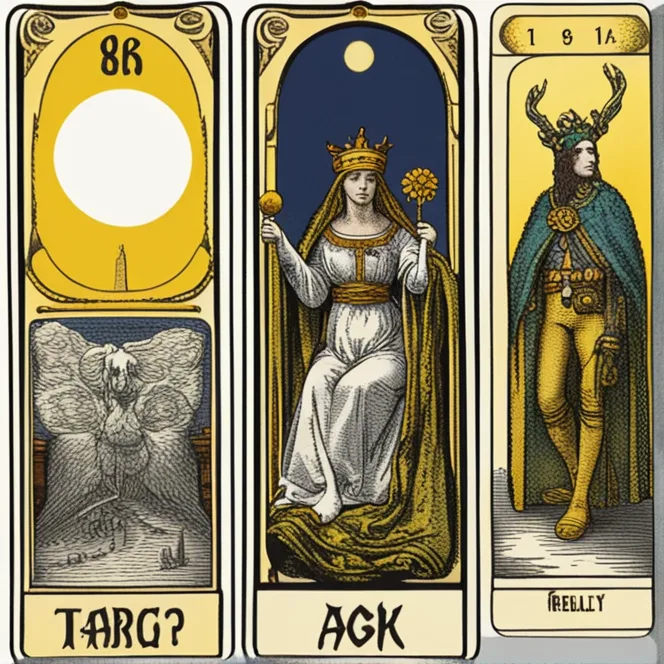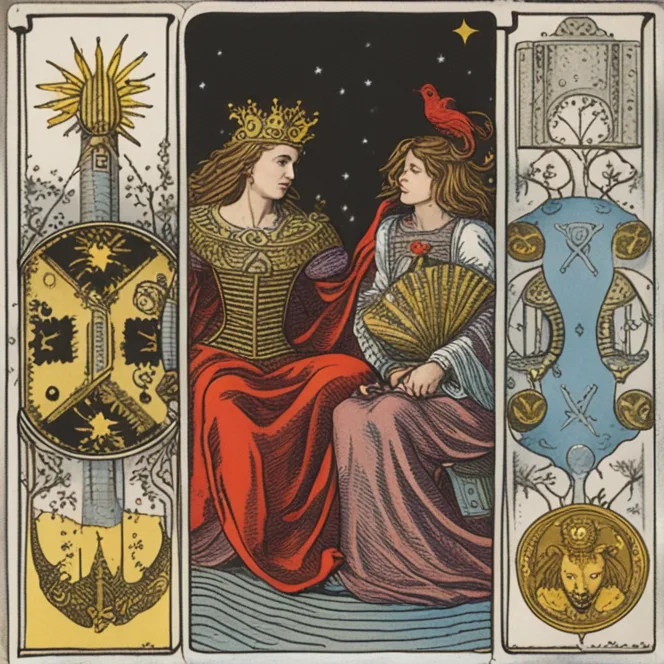
The Essence of Tarot
Tarot cards have been a subject of fascination and speculation for centuries. In essence, they are a deck of 78 cards, each with its own imagery, symbolism, and story. The tarot deck is divided into two sections: the Major Arcana, which consists of 22 cards representing life's karmic and spiritual lessons, and the Minor Arcana, which includes 56 cards reflecting the trials and tribulations of daily life. These cards are used as a tool for divination—a way to predict one's future or to gain insight into personal questions and dilemmas.

Historical Perspectives
The origin of tarot cards is a tapestry woven with threads of history and mystery. It is widely believed that tarot cards were initially used as playing cards in the 15th century in various parts of Europe, and only later were they associated with mysticism and magic. Over time, tarot cards have become increasingly linked to the esoteric and the occult, with various interpretations and lore surrounding their use and meaning. Many tarot enthusiasts and historians continue to debate their true origins and purpose, which adds to the cards' enigmatic allure.

The Skeptics and Believers
The question of whether tarot cards are "real" can be viewed through different lenses. Skeptics may argue that the cards themselves hold no intrinsic power, and that any "accuracy" in readings is due to cold reading techniques, subconscious cues, or the Forer effect—wherein individuals give high accuracy ratings to vague and general personality descriptions. Conversely, believers in tarot may argue that the cards serve as a conduit to a higher consciousness or the collective unconscious, and that skilled readers can tap into deep truths and guidance through their interpretations.

Psychological Significance
From a psychological standpoint, tarot readings can offer reflective insights regardless of one's belief in their divinatory capability. The symbols on the cards might prompt introspection and self-understanding, serving as a mirror to the psyche. Individuals may use tarot readings as a tool for self-development, allowing them to contemplate aspects of their lives from a fresh perspective. Therefore, some might posit that the 'reality' of tarot is less about supernatural foresight and more about introspection and personal growth.

Interpreting the Cards
The practice of tarot readings relies on the reader's ability to interpret the cards' rich symbolism and align them with the querent's context and situation. This interpretation can be subjective and intuitive, often influenced by the reader's own experiences and understanding. While each card has traditional meanings, they take on a nuanced character in the hands of different readers. In this way, tarot readings are co-created stories, the result of the interplay between the reader, the cards, and the one seeking understanding.
User Experience & Personal Testimony
Many people report finding guidance and clarity through tarot card readings. User experiences tend to be varied, with some recounting eerily accurate readings and others attributing positive experiences to introspective contemplation rather than predictive power. Personal testimonies often reflect a deep connection with the tarot session's outcome, suggesting that regardless of one's beliefs about the metaphysical aspects of the practice, it can still provide meaningful and personal insights.
Published: 12/5/2023
Modified: 12/5/2023
More predictions
Come back here soon to learn more about yourself and your future


Unveiling the Mysteries of the Minor Arcana
In the world of tarot, the Minor Arcana often plays a supporting role to the more famous Major Arcana, yet it holds profound insights into our daily lives. Comprising 56 cards, the Minor Arcana delves into the nuances of everyday experiences, emotions, challenges, and opportunities. This article explores the structure, symbolism, and interpretation of the Minor Arcana, offering a deeper understanding of its role in tarot readings.


Tarotscope's Role In Decision Making
In a world filled with choices and uncertainties, seeking guidance and clarity is a natural human inclination. For centuries, people have turned to various divination tools to gain insights into their lives and make informed decisions. One such tool, Tarotscope, has stood the test of time and continues to provide valuable perspectives. In this article, we will delve deeper into the role of Tarotscope in decision-making, shedding light on how it can offer insights, guidance, and a sense of direction in the face of life's challenges.


Tarotscope Journeys: Navigating Your Spiritual Path
Tarotscope, a mystical fusion of tarot cards and astrology, offers more than just a glimpse into the future; it provides a profound tool for self-discovery and spiritual growth. This article embarks on a journey into the realm of tarotscope, exploring its role in helping individuals uncover their spiritual path, connect with their inner selves, and find meaning in their lives.